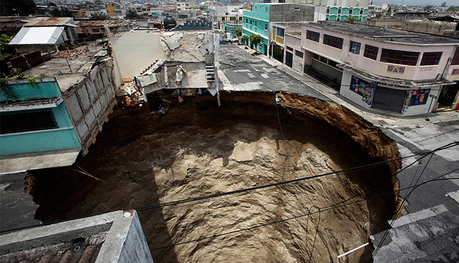
Underneath Paris is a network of Roman-era quarries and medieval mines that is much more extensive than most people realize-- 40 % of the city stands over holes. There are 300+ kilometers of stabilized tunnels under Paris. I recently read Graham Robb's book Parisians: An Adventure History of Paris. Among many other interesting and little-known stories, the book discusses the efforts of Charles-Axel Guillaumot, the 18th-century engineer who stabilized the mines and saved large sections of the city from falling through the roofs of the quarries. I also knew that before you buy any property in Paris, you get a report on whether or not there are quarries underneath the building. This is usually lost in the storm of paperwork and few people check it carefully. But the reason it's important is that the owners of a building are responsible for all costs of shoring up the building if the ground starts to give way-- in some places that can cost hundreds of thousands of euros. In parts of the city, notably the picturesque Mouzaïa district northeast of the Buttes-Chaumont, the buildings are made of wood and not allowed to be more than a certain height because of the danger of collapse.
This report by some interns at Rue89 (a great website run by off-duty journalists) woke me up. The map of Paris at the top of one article clearly shows that my apartment building sits right over a huge underground quarry.
Don't think you will get anything from your insurance company if sinkhole happens. Quarries and mines are not considered "accidents" or natural disasters." But don't worry. In Paris there are only ten or so incidents a year, and only one complete collapse.
*"Under the cobblestones, the abyss." The photo of a sinkhole in Guatemala is by John McNab, Flickr.

